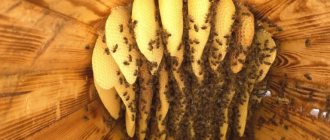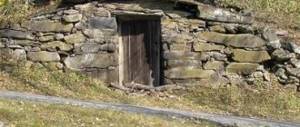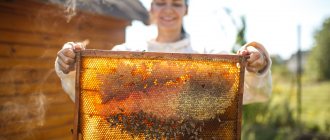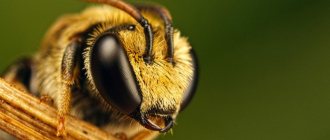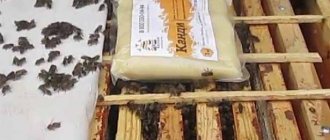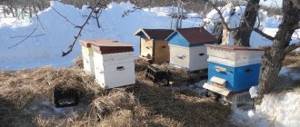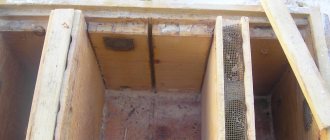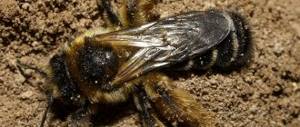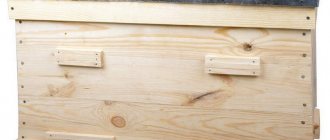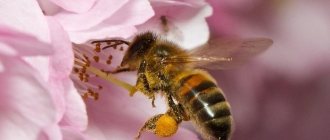Beekeeping is becoming very popular. Novice beekeepers try to use new technologies. Old methods are being replaced by new ones, designed specifically to increase the efficiency of honey collection.
When choosing the appropriate technology, you need to take into account the climate, the type of insects and the structure of the hives. The Cebro method is very popular.
The essence of the method
There are several ways to prevent insect swarming. But the beekeeper Cebro’s method is the most popular. Cebro technology, which is often used to organize the life of insects, includes several options aimed at the following purposes:
- increase in collection;
- an increase in the number of working individuals, especially at the beginning of collection;
- increasing the safety of insects during wintering;
- swarm blocking;
- protection of the queen bee.
Helps to renew and improve the health of the bee colony. Rapid queen hatching and beekeeping using Cebro technology is the most effective. This zootechnical method of beekeeping provides for the painless unification of colonies by initially placing them in the same room, but separated by a blank partition.
Hatching queens
In order for the hatching of queen bees to be productive, you need to adhere to the basic rules:
- draw conclusions in the warm season;
- use healthy families for breeding;
- take only those who are not prone to swarming.
It is best to replace in the spring when there is good drone brood. You need to use old bee larvae, they will be the healthiest and hardiest. This method does not cause stress for the family and is the least expensive.
The removal of queens is done in the following way:
- the old uterus is removed;
- carefully remove the honeycomb with brood;
- honeycombs are trimmed;
- place the brood in the center of the nest;
- insects immediately begin to build queen cells.
This method is effective only for a small apiary.
Swarming Prevention
Swarming is a natural event in the life of bees. The main thing is not to miss the moment of building swarm queen cells. An experienced beekeeping technician will always guess this moment.
You can avoid swarming by using the partition method:
- place empty frames in the nest;
- arrange them evenly every 2 full.
Insects will immediately begin to fill the empty combs and swarming will not take place.
Wintering
A beekeeper working on Tsebro must prepare his charges for wintering in advance.
- It is necessary to check the number of queen bees and their condition. Be sure to examine the individuals to ensure they have sufficient fat reserves to withstand the low temperature.
- You can check the food supply for the presence of honeydew, pump it out, and feed the insects with sugar syrup or liquid honey.
With proper preparation, the family will survive the winter with minimal losses.
Cebro method in beekeeping: video
As I realized when I became interested in the topic, there are hundreds of videos circulating online with the caption “video using the Cebro method.” There are a lot of lectures conducted by Vladimir Petrovich himself, recorded on camera, for example this one:
His followers from the younger generation are also striking in their clarity and sharing their experiences. You can find everything: from video instructions on how to hatch queens, to the design of hives and the nuances of feeding. One of the ardent followers of the Megaprospector technology shows on video beekeeping using the Cebro method. He has his own channel on Youtube with many videos on Cebro and more. Below is one of his best videos.
In his videos, the beekeeper shows the Cebro method in action. There is a whole epic of videos using Vladimir Petrovich’s technology. I also strongly recommend watching the series of lectures by the developer of the method and his followers, which are filmed on video. Even if there is not enough clarity there, the theory presented is very strong, plus distortion is excluded - the information comes first hand. Before watching, to complete the picture, I advise you to stock up on improvised notes and a pen - you will have something to write down. I watched the full series of Cebro’s lectures and always took notes on the details that interested me. Now, although I do not 100% adhere to his recommendations, sometimes the information written down helps me out a lot.
Any technology must be thoroughly studied using materials from the original source; you should not, after reading extracts on the Internet, change everything radically in the apiary; first read the textbooks.
Videos on beekeeping in Tsebro do not all correspond to the original source; the information in some is distorted, not always for the worse, but nonetheless. In order to follow classical technology, deeply understand it and correctly apply it in practice, I would recommend getting books published by his department under his leadership, which describe in detail all the subtleties and nuances of the method, only the basics of which I managed to capture in this article. The same lectures in video format will allow you to delve significantly into the intricacies of beekeeping according to Tsebro, and the diagrams and drawings given in the books will allow you to easily make the appropriate hive technologies and equipment.
| In contact with: |
General rules
When maintaining an apiary, a technician or beekeeper must adhere to the mandatory rules of beekeeping, which will help save insects from extinction and increase honey yield:
- work only in clean clothes;
- use clean tools;
- do not make noise or fuss;
- do not light a fire near the hives;
- do not hang bird feeders;
- place drinking bowls on the territory;
- you need to inspect the inside of the hives as rarely as possible;
- You need to pull out the outer frames first;
- inspect the honeycombs only above the hive, so as not to lose the queen;
- It is better to place the container with the queen in the center of the nest, and carefully move the rest to the side;
- You cannot cut the queen cells until the queen is found;
- it is necessary to protect the apiary from rodents.
By following all these simple rules, you can maintain the number of insects and increase the productivity of your apiary. Let's consider analog beekeeping technologies.
Breeding queen bees
It is not necessary to purchase new queen bees. If you keep insects in optimal conditions (humidity, temperature and nutrition), then you can actually grow a queen yourself. For these purposes, you should choose eggs whose lifespan is 2-3 days. The graft containing the eggs is installed in the upper housing. It should contain frames containing food for insects and elements for brood.
In the spring, the brood is stimulated: an additional building is added. Grates with food and young brood are installed in it, and there should be a lattice between them.
Breeding queen bees using the Cebro method
Analog Medots
Let's consider beekeeping methods analogous to the Cebro method using a separation grid.
Vashchenko method
The hives, measuring 410 x 330 mm, have one entrance in the rear and front walls. The new swarm is placed near the reserve entrance, fed with dry food and wax, and a partition is placed. When the main swarm collects honey, a young queen is nursed in the new colony. Then it is planted in the place of the old one, and the two families are united into one strong one, removing the blank wall. The removal of bees from the swarming state using Vashchenko’s technique becomes faster.
Unique Vladimir hive
The Vladimir design uses the partition method. The houses are made using frame technology, are very warm, and do not need to be moved to a winter road. A sun lounger is arranged on them, making it possible to treat patients. They are distinguished by large dimensions of 600 x 1300 mm. They do not have shops or separate buildings. One house accommodates 2-3 families.
Method of A. I. Volokhovich
This is a technology for uniting several bee colonies immediately before the bribe. The method increases honey yield by up to 12 kg daily and is very effective in beekeeping.
Other methods
There are several more ways to effectively breed bees if the region where the apiary is located is Russia or the Republic of Belarus. Bashkortostan is:
- The famous Demari method is not used very often in beekeeping; with its help, fistulous queens are obtained. The Demari anti-swarm method is used on large 2-3 level hives.
- Beekeeper Kovalev's method is used to more effectively isolate the queen. Guarantees proper care of bees.
- Beekeeper Lonin's method involves intensive beekeeping and is used in areas where there are few opportunities for transporting hives to fields.
- Beekeeper Nekrasov's method is used for frequent swarming of bees.
Some beekeepers in Russia recommend the Alexander method, when the queen is placed on the lower tier of the hive, and the insects in the upper floor, not seeing the queen bee, stop swarming.
Beekeeping tips from Vladimir Tsebro
The Cebro method in beekeeping is appreciated today. Vladimir’s advice is used and successfully put into practice by beekeepers from all over the country. Below are the main tips from Cebro, the effectiveness of which has been tested by time and approved by beekeepers:
- Adhere to the beekeeper’s calendar, making important notes in it regarding a specific farm, analyze them and rely on them in the future.
- Supporting the microclimate in the hive. A constant environment in the hive, no sudden changes in temperature, no increase in humidity above the permissible level is the key to the health of the bees. In this context, Tsebro recommends never, with the exception of frosty days when the air temperature drops below -10 degrees, to close the tapholes. Even on cold days, there are gaps in them for ventilation.
- A small distance from the bottom to the frames will help avoid drafts and retain heat. The optimal gap is up to 3 cm.
- To reproduce, it is necessary to take a second swarm, select the queen from the first swarm, and return the bees to the family.
- Follow the wishes of the bees. Be attentive to which honey plant they are more inclined to eat if there are several honey plants in the vicinity. This will help you choose the right location for the hives, near the honey plants loved by bees.
- A double-hull hive must be equipped with a grid to avoid the queen from getting into the upper body and the development of the swarming process.
- Fertilize in winter after completing honey extraction work.
- Change the uterus annually, even if the previous one is still productive.
- A healthy queen is half the success of a family, a nuance that significantly increases the efficiency of bees during the honey harvest period. The queen is hatched exclusively from the best white honeycombs of healthy, strong families. Frames with future queens can be cared for only in families without a “queen” in which the brood varies in age.
- Warming up the honeycomb frames before pumping out honey. During the day they must be kept at temperatures above 27 degrees. It is optimal to use an electric radial honey extractor with 32 frames. Do not forget to filter the honey, clearing it of impurities.
- Carefully monitor the health of the wards. Do not skimp on disease prevention. At least once a year (in the spring), conduct laboratory tests of dead bodies in order to timely identify common diseases.
Printing honeycombs in the apiary
Calendar
Beginning beekeepers need to know the Cebro calendar, according to which work on caring for the apiary is carried out:
- January. Listen to the uniformity of the hum using a rubber hose. If you hear a smooth sound, then everything is fine. Repair work is being carried out, frames are being prepared, etc.
- February. The area near the bee houses is covered with straw to organize early flights and clean the houses from excrement. They replace the honey and change the insulation.
- March. Conduct a quick inspection and replenish food supplies.
- April. They do a complete inspection, clean the houses of dead debris, and feed the insects with beebread.
- May. A veterinary check is carried out, nests are expanded, and layering is created.
- June. The insects are loaded with honey collection, layering is formed, and old queens are replaced.
- July. The apiary is transported closer to the honey fields and replenished with new honeycombs.
- August. They cover the entrances and replenish feed supplies.
- September. Empty honeycombs are removed, new ones with food are installed, and the volume of the nest space is reduced. Barriers from rodents and snow must be installed on the entrances.
- October. The honeycombs are sorted and the unsuitable ones are melted into wax. Store extensions are removed.
- November. Be sure to check the tightness of the houses. Moth control is being carried out.
- December. You need to take care of the warmth. To do this, the houses can be buried in the snow, brought into the winter road, or external insulation can be made.
Wintering of bees
A specialist in the field of beekeeping believes that for wintering bees, hives consisting of several buildings are needed. The home must withstand frost down to -30°C.
The temperature in the hives will be maintained at the required level due to the fact that the bees will constantly consume food and warm each other. During the winter, bees curl up into a ball and do not freeze.
The Cebro method involves having a calendar for beekeeping. It should contain information about technologies for caring for and breeding bees. The Cebro calendar is a table.
| Tasks for January | check if the bees survived the winter well |
| eliminate the pestilence | |
| check spare cells | |
| install parasite bait | |
| it is worth taking care of ventilation and insulation of nests | |
| get rid of old pillows | |
| protect insects from birds | |
| Tasks for February | check bees for diseases |
| send the dead for analysis | |
| Tasks for March | prepare for the flight |
| mark sick families with chalk | |
| Tasks for April | clear the hive of dead bees |
| treat insects from ascospherosis | |
| prepare the feeder and drinker | |
| detect colonies without queens | |
| Tasks for May | form layering |
| introduce young queens | |
| Tasks for June | change frames with brood |
| monitor the attachment of layering to the family | |
| attach layerings without queens |
Hive Cebro
The technology is named after the famous beekeeper and teacher V.P. Tsebro. Provides a good increase in insect productivity. All work must be carried out according to a special calendar schedule. The Cebro method makes it possible to obtain up to 200 kg of honey per season.
Basic rules of beekeeping on Cebro:
- The insects are kept in a large three-component room.
- In the spring, during the growth of the bee colony, the magazine inserts are not removed. They are finishing the second building.
- Weak bee colonies are destroyed, only strong colonies remain.
- After 2 weeks of development of the queen bees and at the end of the bribe, it is necessary to create conditions for the organization of a new bee colony.
To increase honey collection, bees need to be provided with the most convenient wintering period. To do this, they are fed high-quality food and provided with good ventilation.
The advantage of Cebro technology is a small supply and rare swarming.
Blueprints
You can make a Tsebro hive according to the drawings, which indicate the construction parameters.
Assembly
It is very important to be able to do the correct assembly for the winter so that as few individuals as possible die from hypothermia. You can place a Russian lounger in the hives, and a special technician or beekeeper will make the procedure absolutely safe.
With good honey collection, use the following assembly option:
- Sealed frames are installed on one edge of the house.
- Half full ones are placed in the middle of the nest, and then 2-3 low copper ones.
- The assembly is completed with completely sealed honeycombs.
If there is not enough feed for the winter, then use the “beard” assembly:
- Complete sealed frames are installed in the center of the nest.
- Low-copper ones are installed at the edge.
Cebro calendar (types of work by month)
Below is an abbreviated and complete calendar of the main work that needs to be carried out in the apiary. The calendar begins with winter, as it should be.
January
The first winter month of the year has arrived. The hives are in the apiary, they are dusted with snow. The beekeeper needs to do the following:
- Control the pestilence.
- Check how much feed is left.
- If necessary, adjust ventilation.
- Set baits to eliminate parasites.
- If necessary, it is better to insulate the nest by narrowing the entrance.
- If the pillows have been damaged by mice, replace them with new ones.
- Make sure that the entrances do not interest predators, tits and woodpeckers.
To complete the work, you will need a rubber tube through which you can listen to the taphole.
February
This month there are slightly fewer works, but they are very important:
- Continue monitoring how bees tolerate winter conditions.
- Conduct a family count.
- If diseases are detected, organize treatment of bees.
- Feed the bees by adding medicinal candi.
March
We need to start preparing families for the flight:
- Inspect the condition of the hive and bees.
- Continue feeding them candi.
- Use chalk to identify weak and sick families.
- If the hive cover is connected to the body, remove the screws.
April
The month passes under the sign of family unification:
- Examine bee colonies to identify which ones are left without queens.
- Clear the hive of pestilence.
- If insufficient brood is detected, add frames with larvae.
- Unite bee colonies according to the principle of “strong with weak.”
- Clean bee nests by adding honeycomb.
- If ascospherosis is detected, begin treatment.
- Begin preparing drinking bowls and feeders, taking into account their availability for each family.
- Prepare the box.
May
The work is as follows:
- Renew the uterus and start removing them.
- Start forming layering.
- When breeding queens, add them to families.
June
In June you just need to replace the brood queens.
For a complete calendar of necessary work on the pasik using the Cebro method, see below:
Selecting a view
Several types of bees are common in Russia:
- The Central Russian bee is large, dark gray in color, very efficient, and has good resistance to low temperatures.
- Mountain Caucasian gray - has a high working capacity, rarely swarms.
- Mountain Caucasian yellow - not adapted to low temperatures. Quickly emerges from the swarm state.
When choosing a suitable species, it is necessary to take into account the resistance of insects to the low temperatures prevailing in our territory.
